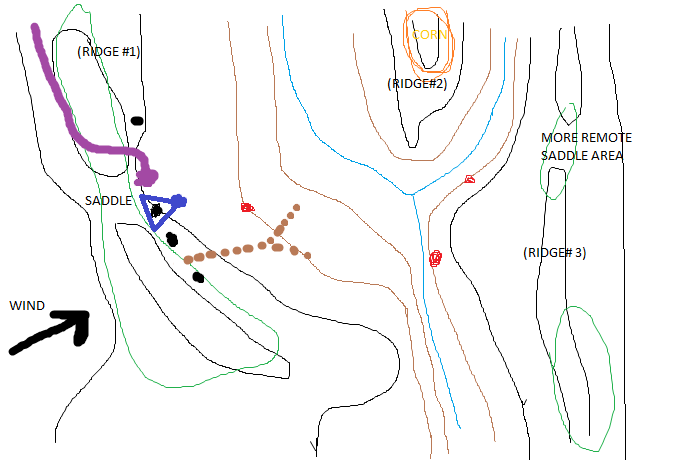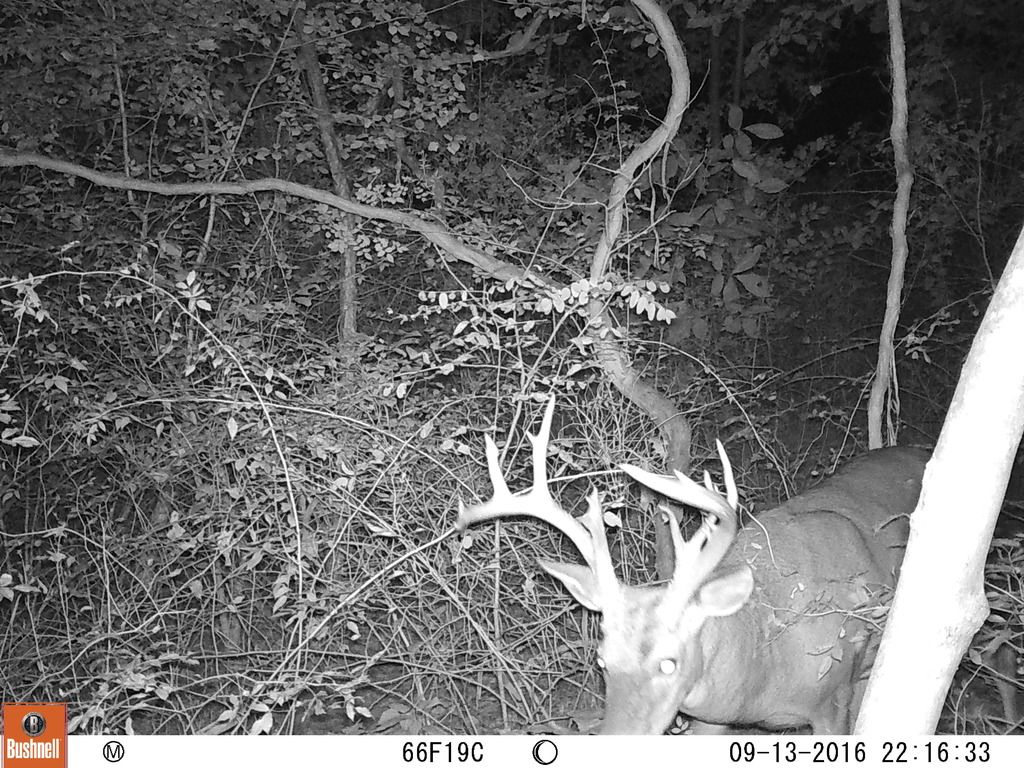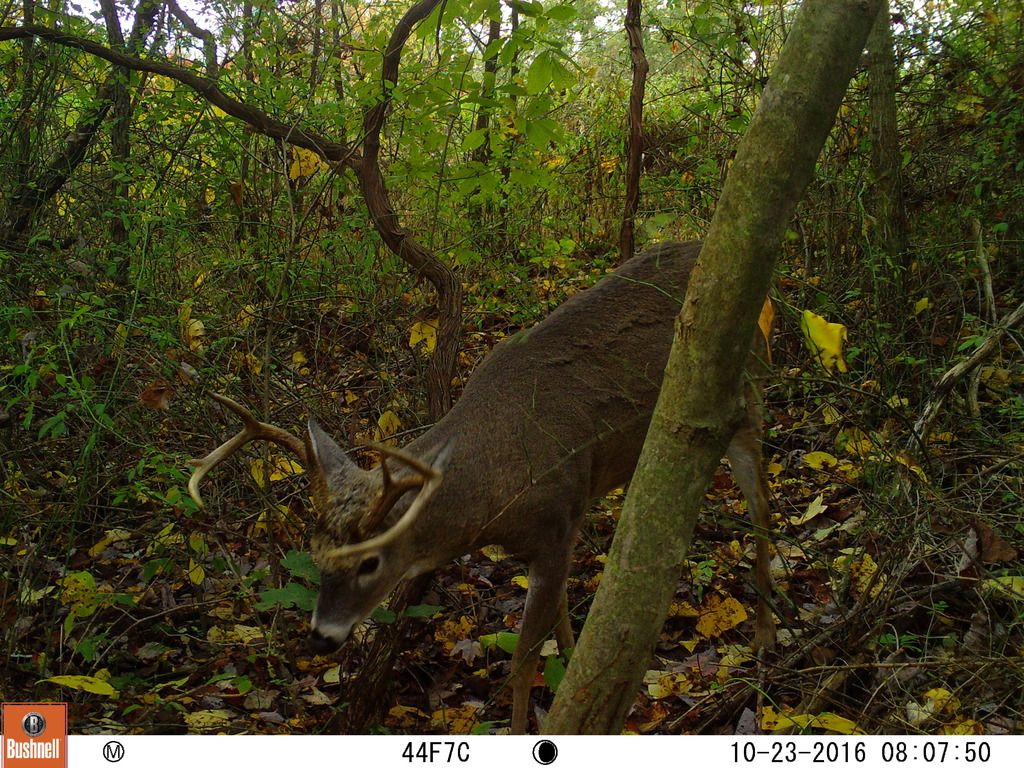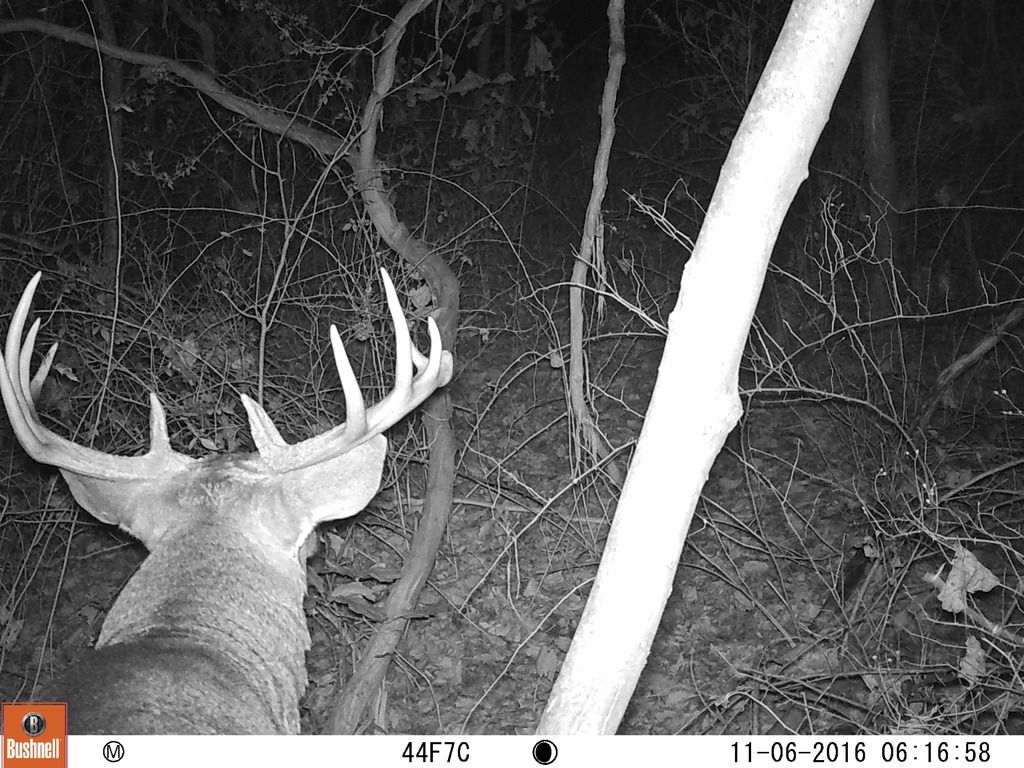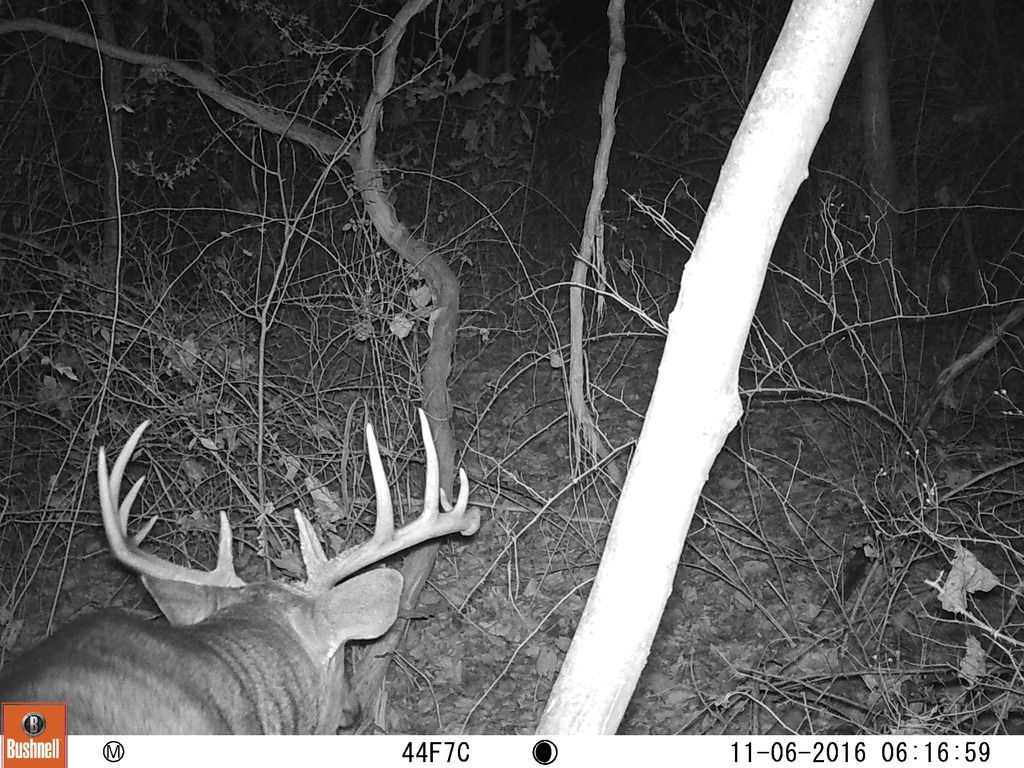mt008 wrote:Maybe unrelated but something that sticks out in my mind after watching the Hill Country bedding DVD is JoeRE describe a centralized or thermal pooling area which was adjacent to hill bedding.
I have not seen the new Hill Country DVD yet so I don't know exactly what Joe was talking about, but I have found big buck bedding spots in low thermal pooling areas near hill bedding. Just this April, in a north country big woods setting, I found multiple bedding sites on a series of gentle points (15-20 feet elevation) that covered all winds except South as far as I could tell. This was typical hill bedding, just small hills. However, the heaviest used bedding area was NOT on the hill points, but rather at the base of the hills (down in the low terrain directly adjacent to the points).
I found big tracks, droppings etc. on the hill beds, but the beds where definitely spread out in their use by the big buck because none of them were obviously heavy used. Quite by accident I walked down to the lower elevation near the hills and came across an odd open area in an otherwise brushy landscape. This open area was a 4 yards by 6 yards oval and was completely matted down as any well used bed would be. I found white belly hairs throughout the entire oval. I found huge tracks and huge droppings as well as average sized. The most unique thing I noticed was that this spot was at the absolute LOWEST point in this area. It was a gentle uphill slope in ALL directions for at least 100 yards from the bed (matted area). And it was within 100 yards of the nearest hill point beds that I found.
So why are the deer (including a fully mature buck) spending so much time here?
-do they hang here because it is the only non brushy pocket around, or is it the only non brushy pocket because deer lay here all the time?
-do they hang here only on south winds because there are not any points nearby that accomodate south wind bedding?
-are they only staging here in the evenings to get the pooling thermals from all directions before they head out?
-are they only bedding here on south winds? Do they only bed here during hot weather (South wind usually) because cooler air settles to the lowest elevation?
I don't know any of the reasons why, but I would welcome any Beast insights! I can't help but think this bed is related somehow to rfickes87's saddle bed.
I did set a tail cam up to watch this spot. I plan to leave it till November, hopefully it will shed some insights.



 . Other bucks are passing thru here also, but usually after dark.
. Other bucks are passing thru here also, but usually after dark. 
